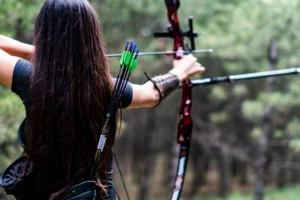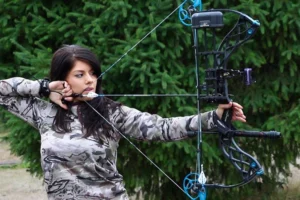Bow hunting is a fascinating and challenging outdoor pursuit that allows you to immerse yourself in nature while refining your archery skills.
In this comprehensive guide, we will not only explore how to get started with bow hunting but also delve deeper into each aspect, providing valuable insights and information to ensure you embark on your bow hunting journey well-prepared and knowledgeable.
Understanding Bow Hunting: A Rich Tradition and Modern Sport
Before we dive into the finer details of starting bow hunting, let’s establish a clear understanding of what bow hunting entails. At its core, bow hunting is the practice of hunting animals using archery equipment.
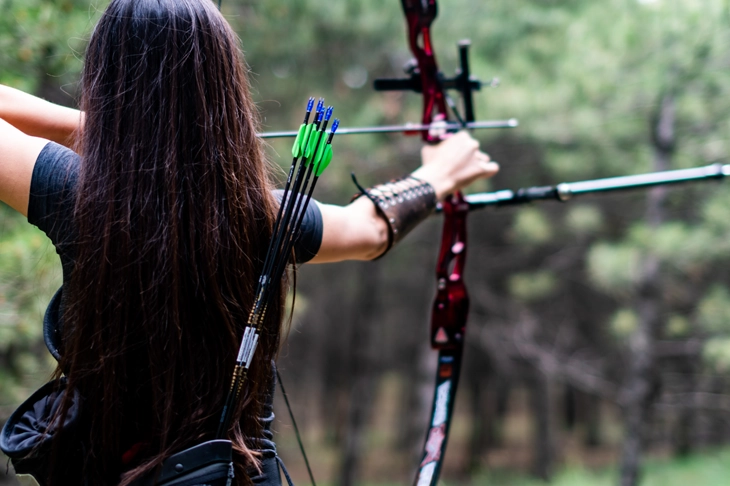
This time-honored tradition has seamlessly transitioned into a modern sport that has captivated the hearts of many hunters and outdoor enthusiasts.
Bow hunting represents a unique and challenging approach to hunting, with a strong focus on skill, precision, and ethical hunting practices.
Learn from Seasoned Hunters: An Invaluable Mentorship
Rather than venturing into bow hunting solo, consider the invaluable benefits of learning from experienced bowhunters.
Before you set out on your own, spend time in the field alongside a seasoned bowhunter.

This mentorship provides you with access to a wealth of knowledge, tools, and techniques that are crucial for safe and effective hunting.
By observing and learning from experienced hunters during your initial outings, you’ll gain confidence and foundational skills that will serve you well throughout your bow hunting journey.
Compliance with Licensing Requirements: Ensuring Legal and Ethical Hunting
One of the fundamental aspects of responsible bow hunting is adhering to licensing requirements and hunting regulations.
Each state has its own set of rules and regulations governing hunting practices, including licensing, permits, and stamps.

To ensure a smooth and ethical hunting experience, always carry your required licenses and documentation with you while hunting.
Consider utilizing a dedicated compartment, pocket, or license holder to keep your documents organized and easily accessible.
Additionally, safeguard your documents from the elements by using sealed plastic bags.
Knowledge of your state’s specific laws and regulations is not only essential for your safety but also contributes to the overall conservation efforts and ethical practices within the hunting community.
Selecting the Right Bow: Your Weapon of Choice
The choice of your bow is paramount to your success in bow hunting.
Unlike a one-size-fits-all approach, bows should be carefully selected to suit your unique physique and skill level.
Key factors to consider when choosing a bow include draw length, draw weight, and the intended game you plan to pursue.

Your ability to hold the bow steadily at your target, maintain precise aim, and draw smoothly without unnecessary movement hinges on selecting the right bow.
It’s important to note that different states may have minimum weight limits for hunting bows, so be sure to familiarize yourself with your state’s specific regulations.
As you progress in your bow hunting journey, you can gradually work your way up from lighter bows, perhaps suitable for hunting fowl or small mammals, to more substantial bows designed for larger game.
Opting for a Bow Release Style: Enhancing Accuracy
The method you choose for releasing your bowstring significantly influences your accuracy and consistency as a bowhunter.
There are two primary release styles: the traditional “shooting fingers” technique and mechanical releases.
The traditional release, relying on your ‘shooting fingers,’ entails keeping your fingers on the bowstring until you are ready to shoot.
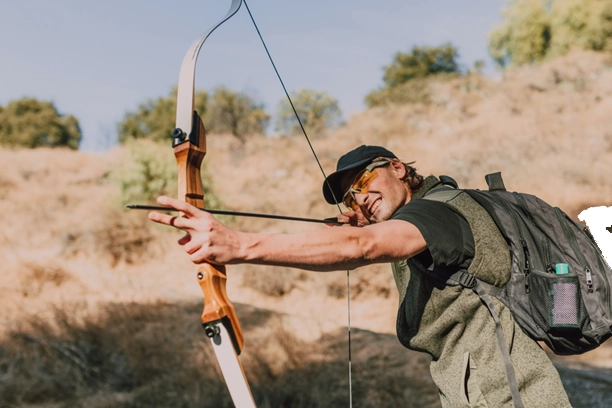
Achieving a steady aim is paramount, and releasing the bowstring should be a controlled, deliberate action. On the other hand, mechanical bow release aids utilize a trigger mechanism to release the bowstring.
In today’s bowhunting world, especially with compound hunting bows, mechanical releases or release aids have gained popularity due to their ability to enhance accuracy and provide a steadier shot.
Regardless of your chosen release style, it’s crucial to maintain composure and stillness during the release to avoid disrupting your arrow’s trajectory.
Bowhunters often employ various techniques, such as controlled breathing and relaxation methods, to achieve a precise and unwavering shot.
The choice of release style is a highly personal one, and it’s essential to experiment and determine which approach aligns best with your shooting style and comfort.
Sighting Your Bow: Precision and Consistency
For every aspiring bowhunter, mastering the art of sighting your bow is a foundational skill that requires discipline and practice.
Before embarking on hunting excursions, dedicate time to adjusting your sight to align with your shooting style.

The process of sighting your bow involves shooting at a bullseye or target and observing the patterns of your arrows.
For instance, if you consistently notice that your arrows land 4 inches to the right of the bullseye, you can make sight adjustments to compensate for this pattern.
By “chasing” your arrow with sight adjustments, you gradually refine your accuracy until you consistently hit multiple bullseye.
Sighting your bow is an ongoing process that allows you to fine-tune your equipment to suit your unique shooting style and preferences.
Choosing the Right Arrowheads: Ethical Considerations
Selecting the appropriate arrowheads for your bow and intended target is not only a matter of effectiveness but also an ethical consideration.
During practice sessions, it’s common to use field point arrowheads, which resemble small bullets.
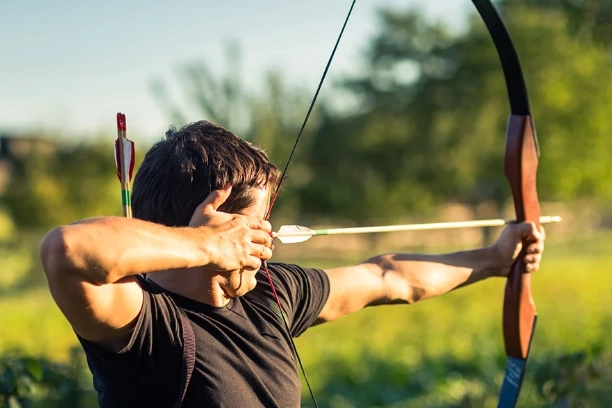
However, it’s crucial to understand that these field points should never be used for hunting purposes. Not only is it considered unethical and unsportsmanlike to hunt with field points, but it is also illegal for hunting large game.
Field points are designed to pass through an animal with minimal immediate damage, potentially leading to a prolonged and agonizing death for the wounded animal.
For ethical and humane hunting, it is imperative to switch from field points to broadhead arrowheads when hunting. Broadheads are similar in shape to razor blades, offering a broader cutting area that ensures a quicker and more humane kill.
Your choice of arrowheads reflects your commitment to responsible hunting practices and the well-being of the animals you pursue.
Prioritizing Safety: Your Well-being and Others
Safety should always be the top priority in bow hunting, from the moment you step off the ground until you return.
When hunting from a tree stand, wearing a safety harness is non-negotiable.

The use of a safety harness helps prevent falls and potential accidents, ensuring your well-being throughout your hunting experience.
If you are hunting with children or fellow hunters, double-check that everyone is equipped with the necessary safety gear.
Bow hunting is a thrilling adventure, but it should always be approached with a focus on safety, responsibility, and preparedness.
Strategic Use of Bow Hangers: Convenience and Readiness
While bow hunting, especially from a tree stand, it’s impractical to hold your bow continuously.
To maintain readiness and convenience during extended hunting sessions, it’s wise to strategically install a bow hanger in your hunting area.
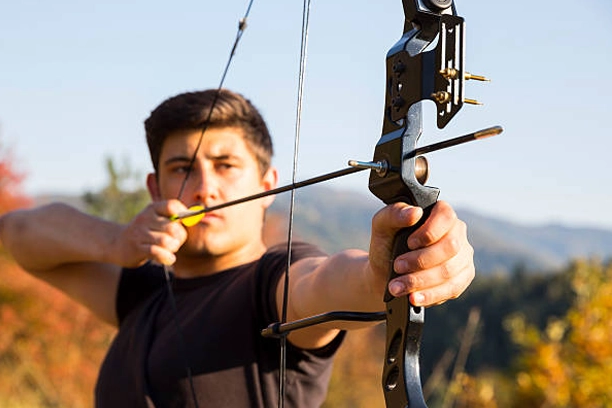
A well-placed bow hanger provides a safe and convenient location to rest your hunting bow while you wait for the perfect shot opportunity.
In some cases, you could find yourself waiting for hours, and having a secure place to store your bow eliminates unnecessary movement and ensures you’re ready to take aim when the moment arrives.
Concealment and Scent Control: The Art of Remaining Undetected
Successfully bow hunting requires a mastery of concealment and scent control.
When you’re positioned only 20 to 30 yards away from your target, every detail matters.
Consider investing in high-quality camouflage gear that minimizes your visibility to the keen eyes of your quarry.
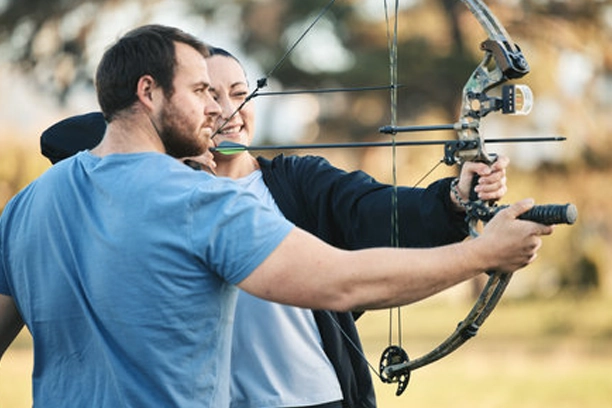
It’s essential to show as little skin as possible when wearing hunting clothes and camouflage. Additionally, equip yourself with gloves, face coverings, or a face paint kit to conceal exposed skin effectively.
Managing your scent is equally vital, as deer and other game animals possess an acute sense of smell, capable of detecting human odors from up to 400 yards away.
Utilize scent-control techniques such as field spray and scent-eliminators to neutralize your odor and increase your chances of remaining undetected.
To enhance concealment further, consider adding scent-control hunting gear to your wardrobe and incorporate cover scents to blend seamlessly with your surroundings.
Additionally, always be mindful of wind direction, as positioning yourself downwind of your target is crucial to avoiding detection.
Mastering these concealment and scent-control techniques is an ongoing journey and a hallmark of successful bowhunters.
Taking Ethical Shots: Precision and Compassion
When it comes time to take a shot, ethical considerations should guide your decisions.
Ideally, you should aim for a shot when the animal is in a broadside or slightly angled position.
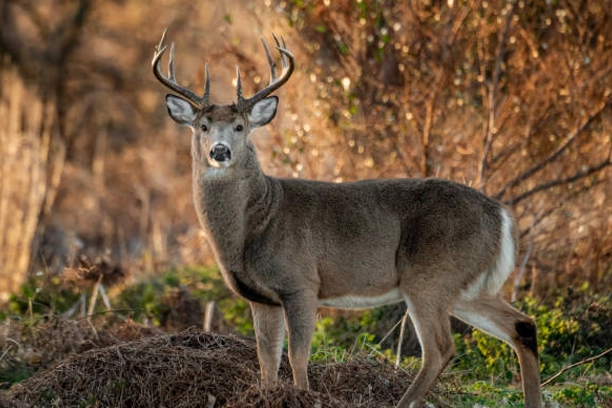
These positions offer the best chance to hit vital organs like the lungs and heart, ensuring a quick and humane kill.
For those new to bow hunting, it’s advisable to avoid negotiating for an angled shot, as it reduces your chances of hitting the vital organs accurately.
It’s essential to refrain from aiming for the neck, head, or rear, especially if you are new to hunting, as these shots are often less reliable and can result in unnecessary suffering for the animal.
Prioritizing ethical shots is a testament to your commitment to responsible and compassionate hunting practices.
Exercise Patience: A Key to Success
After successfully making your shot, exercising patience is critical to a successful hunt.
Rushing toward your shot target immediately can have adverse consequences, potentially causing the wounded animal to flee, making tracking difficult, and increasing the risk of losing the animal altogether.
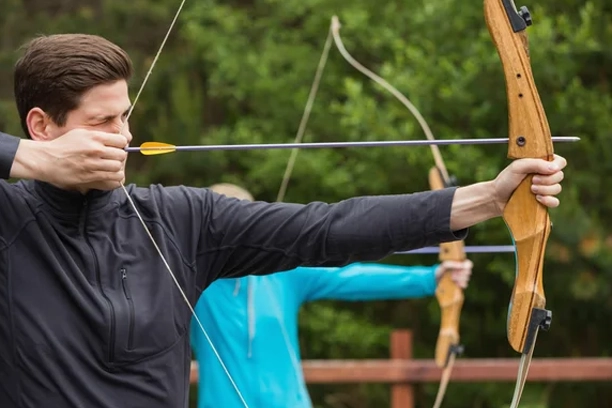
The amount of time you’ll need to wait depends on the shot placement. For a double-lung shot, waiting an hour is typically sufficient.
However, if you missed the lung or the shot placement is less than ideal, you may have to exercise even more patience, waiting up to 12 hours if necessary.
Patience is not only a virtue in bow hunting; it’s a fundamental aspect of responsible and ethical hunting practices.
In Conclusion: A Journey of Skill and Understanding
Even if you are a seasoned archer already, learning how to start bow hunting is a brilliant way to expand your options and deepen your connection with nature.
Apart from the fact that you’ll automatically enhance your archery skills, bow hunting will educate you on animal behaviors and habits, instill a profound appreciation for conservation, and provide endless opportunities for adventure.
The journey into bow hunting is an ever-evolving one, characterized by dedication, practice, and a commitment to ethical hunting practices.
By following the guidance in this comprehensive guide, you’ll not only get into bow hunting but also embark on a rewarding journey of skill, understanding, and respect for the natural world around you.


